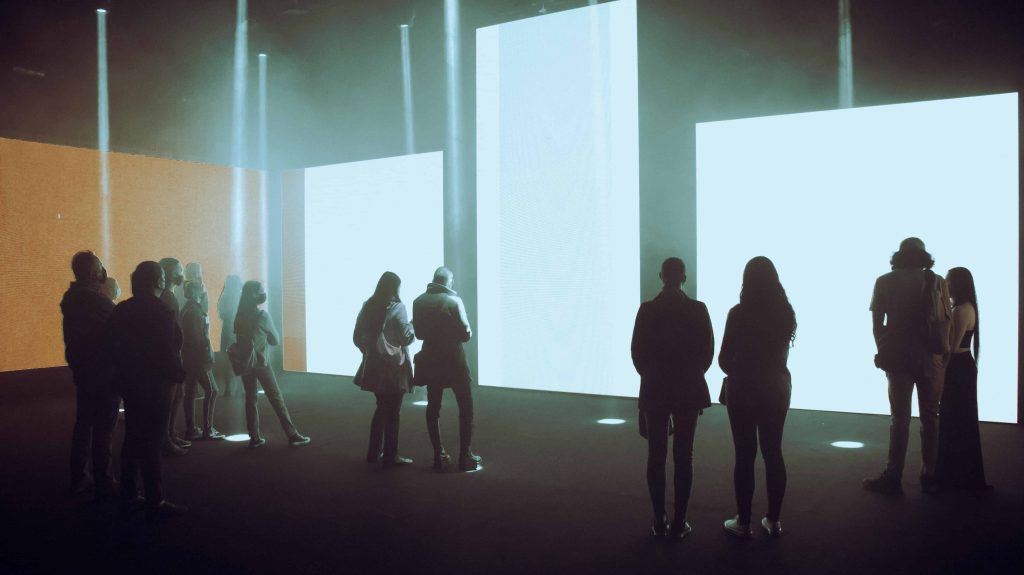06 Sep Digital Art Exhibition Reviews and Critiques
Decoding Digital Art: Crafting Compelling Reviews for the Modern Age
Digital art has surged as a powerful entity in today’s art scene, utilizing technology for expression. It takes various forms, like digital paintings, animations, and immersive virtual reality. As its influence grows, so does the importance of art criticism and reviews. These assessments shape discourse and comprehension within the field, guiding audiences through the complexities and innovations of digital art. They not only critique but also serve as guides, enhancing appreciation and understanding of this evolving medium.

Elements of a Digital Art Exhibition Review
Exhibition Information
When crafting a review, it’s vital to include key details. Start with the exhibition title and the names of the participating artists or collectives. Offer a concise overview of the curatorial statement, outlining its thematic direction. Additionally, provide information about the venue and duration to help readers contextualize the event within the broader art scene.
Analysis of the Artwork
Reviewers must delve into the artworks to understand their nuances. Explore the spectrum of digital art featured, from interactive installations to video pieces. Assess how artists utilize technology to express their ideas and emotions. Consider the synergy between medium and message, evaluating originality, aesthetic appeal, and technical proficiency to gauge the artwork’s impact.
Curatorial Choices
Evaluate the curator’s curation of the exhibition. Analyze the arrangement of artworks within the space and how they interact with each other. Consider the coherence of the overarching theme or narrative, noting any thematic progressions or contrasts. Assess the exhibition design’s effectiveness in capturing the audience’s attention and fostering a meaningful engagement with the art on display. These insights illuminate the curator’s vision and the exhibition’s overall impact.

Writing a Compelling Critique
Constructing an effective critique entails a delicate blend of clarity, authority, and helpful feedback. It demands reviewers articulate opinions with precision, supported by rationale, and using language accessible to diverse audiences. The inclusion of art-specific terminology is pivotal for conveying depth without alienating readers with unnecessary jargon. Equally crucial is the provision of constructive criticism aimed at nurturing artists’ growth. Tailoring critiques to resonate with the intended audience ensures relevance and impact. Ultimately, a well-crafted critique not only evaluates but also inspires and guides artists in refining their craft, fostering a culture of continuous improvement within the creative community.

Conclusion
Digital art’s ascendancy in the contemporary art landscape underscores the imperative of adept criticism. Exhibitions serve as crucibles where innovation and expression collide, necessitating discerning analysis to decode their significance. A comprehensive review must encapsulate pivotal exhibition details, probe the intricacies of featured artworks, and dissect curatorial decisions. Effective critique, characterized by lucidity and constructive feedback, not only evaluates but also catalyzes artistic evolution. By demystifying digital art and fostering dialogue, reviews become catalysts for a deeper appreciation of this burgeoning medium, propelling its trajectory forward.
Key Takeaways
- Digital Art’s Influence: Digital art has become a significant force in contemporary art, utilizing technology for expression across various mediums like digital paintings, animations, and virtual reality.
- Importance of Critique: Reviews and critiques play a crucial role in shaping discourse and understanding within the field of digital art, guiding audiences through its complexities and innovations.
- Elements of a Review: A comprehensive review should include exhibition details, analysis of artworks, and evaluation of curatorial choices, providing context, insight, and understanding.
- Constructing a Critique: Constructive criticism, clarity, and accessibility are key in crafting effective critiques, aimed at nurturing artists’ growth and fostering continuous improvement within the creative community.
- Conclusion: Reviews serve to demystify digital art, fostering dialogue and deeper appreciation, ultimately propelling the medium’s trajectory forward in the contemporary art landscape.
FAQs
What should be included in a review of a digital art exhibition?
Essential elements include exhibition details like title and participating artists, an analysis of featured artworks, and an evaluation of curatorial choices such as arrangement and thematic coherence.
How can reviewers ensure their critiques of digital art exhibitions are effective?
Reviewers should aim for clarity, authority, and constructive feedback. Art-specific terminology adds depth without alienating readers, while tailored critiques resonate with diverse audiences and nurture artists’ growth.
What role do digital art reviews play in fostering appreciation of the medium?
Reviews decode digital art’s complexities, guide audiences, and inspire artists. By demystifying exhibitions and offering constructive criticism, reviews enhance understanding and contribute to the medium’s evolution.
Journey through the intricate symbolism and powerful storytelling embedded within indigenous artworks, revealing profound connections to heritage and tradition.

